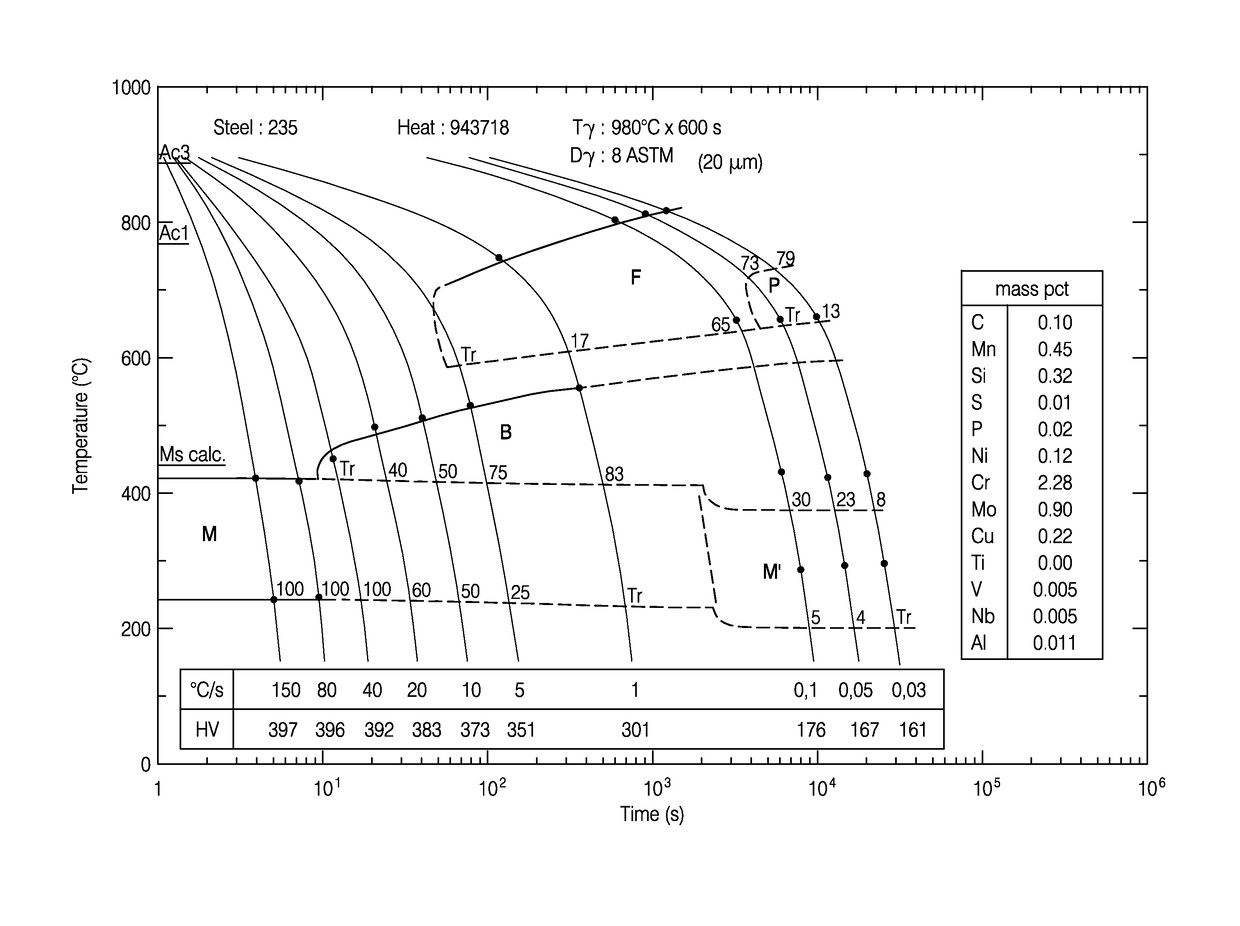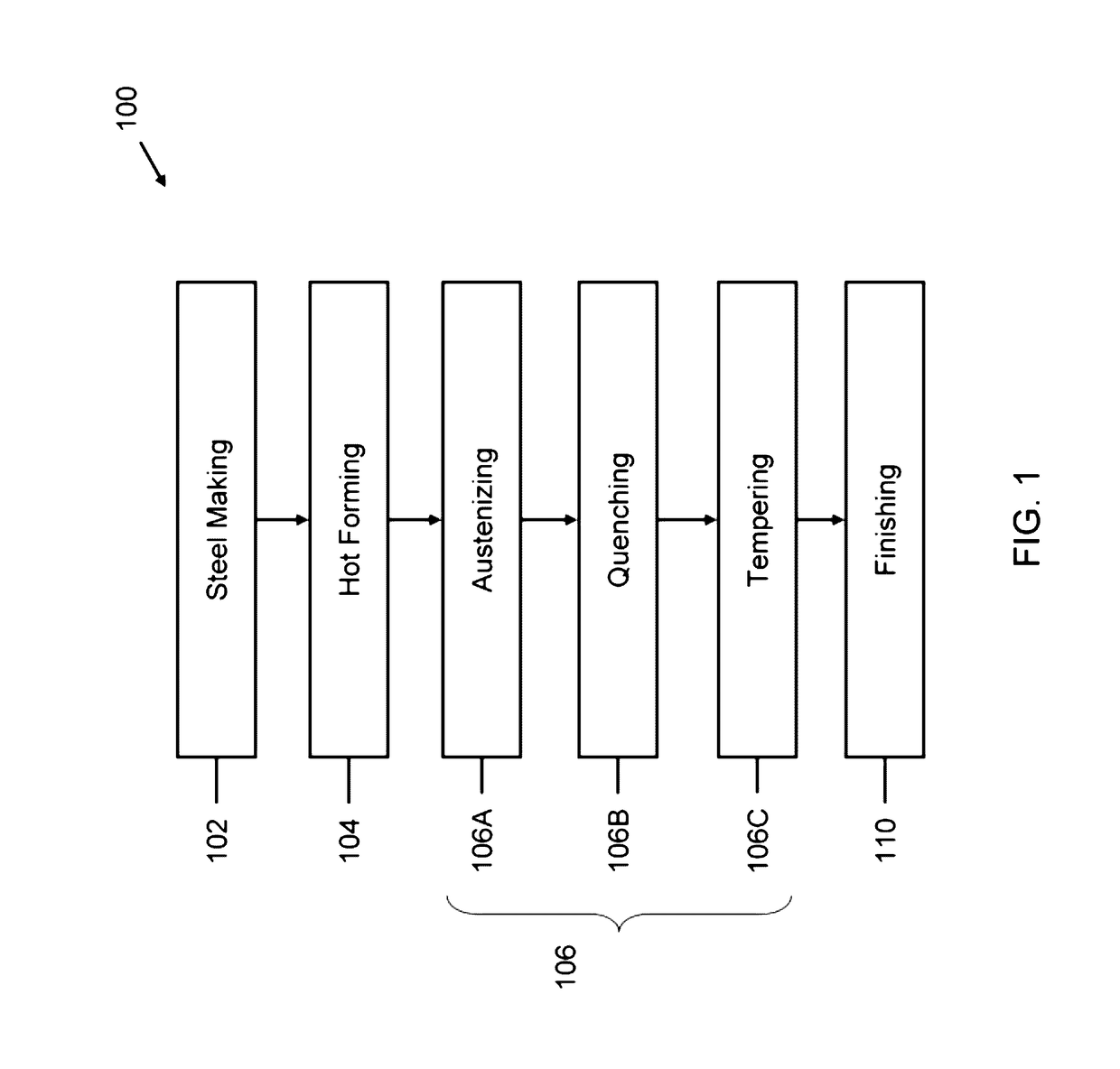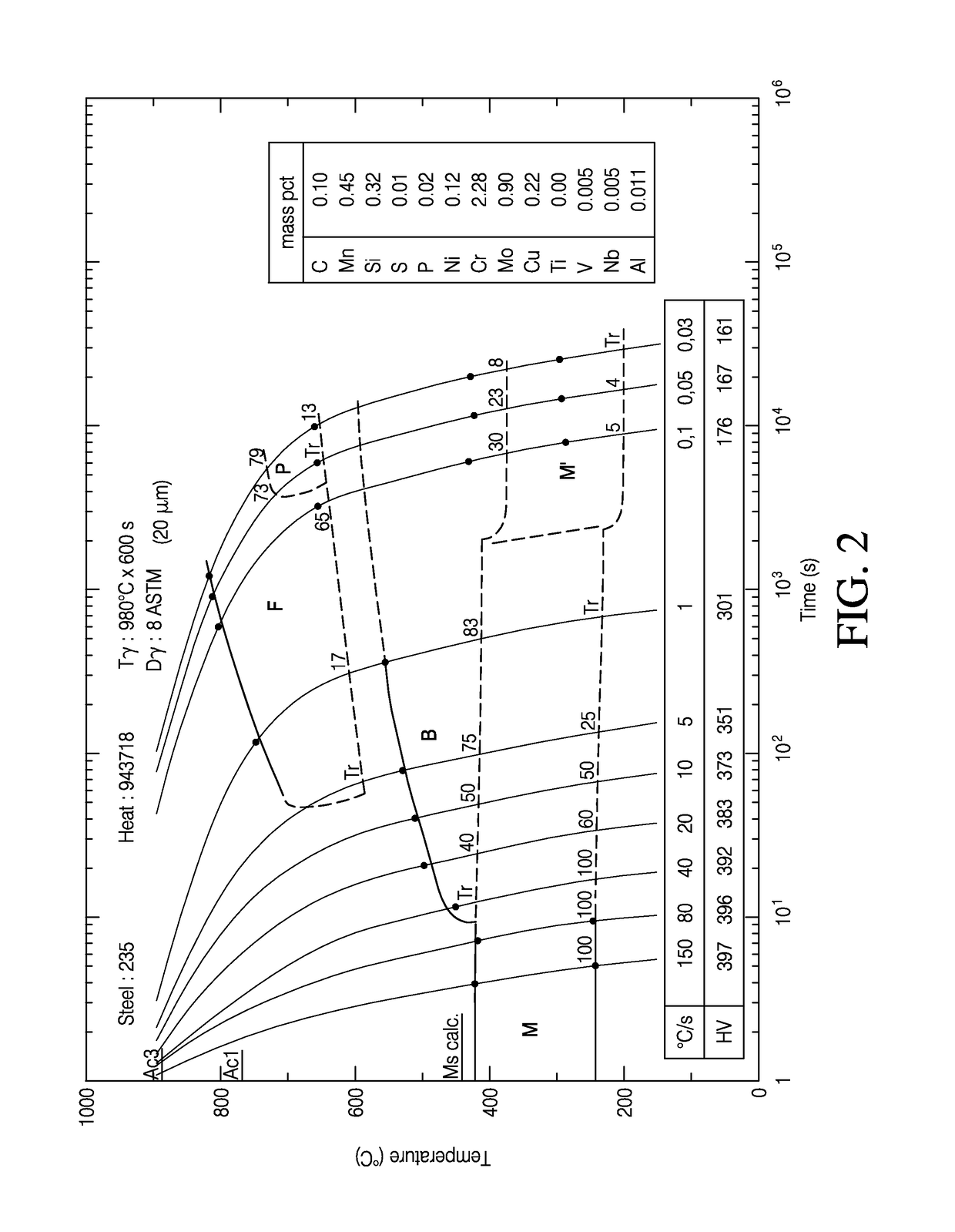High strength steel pipes with excellent toughness at low temperature and sulfide stress corrosion cracking resistance
a high-tensile steel pipe and low temperature technology, applied in the field of metal production, can solve the problems of sulfide stress corrosion cracking resistance, steels with specified minimum yield strength (smys) exceeding about 70 ksi can suffer failures, and it is difficult to meet the nace requirement for sour service materials, so as to achieve excellent low temperature toughness and corrosion resistance.
- Summary
- Abstract
- Description
- Claims
- Application Information
AI Technical Summary
Benefits of technology
Problems solved by technology
Method used
Image
Examples
example 1
Mechanical and Microstructural Properties of Quenched and Tempered Pipes for 80 ksi Grade
[0252]The microstructural and mechanical properties of the steel of Table 2 were investigated. With respect to the measurement of microstructural parameters, austenite grain size (AGS) was measured in accordance with ASTM E112, packet size was measured using an average lineal intercept on images taken by scanning electron microscopy (SEM) using the electron backscatter diffraction (EBSD) signal, the volume of martensite was measured in accordance with, the volume of lower bainite was measured in accordance with ASTM E562, the volume percentage of non-metallic inclusions was measured by automatic image analysis using optical microscopy in accordance with ASTM E1245, and the presence of precipitates was investigated by transmission electron microscopy (TEM) using the extraction replica method.
[0253]With respect to the mechanical properties, yield strength, tensile strength, and elongation were mea...
example 2
Mechanical and Microstructural Properties of Quenched and Tempered Pipes for 90 ksi Grade
[0277]The microstructural and mechanical properties of the steel of Table 8 were investigated as discussed above with respect to Example 1. A heat of about 90 t, with the chemical composition shown in Table 8, was manufactured by electric arc furnace.
[0278]
TABLE 8Chemical composition of the heat of Example 2CMnSiPSNiCrMoCaVNbTiN0.110.410.240.0100.0020.092.220.910.0120.060.0050.0020.0074CuAlAsSbSnBH0.100.010.0050.00180.0090.00010.0002
[0279]After tapping, deoxidation, and alloying additions, secondary metallurgy operations were carried out in a ladle furnace and trimming station. After calcium treatment and vacuum degassing, the liquid steel was then continuously cast on a vertical casting machine as round bars of approximately 330 mm diameter.
[0280]The as-cast bars were re-heated by a rotary heath furnace to a temperature of about 1300° C., hot pierced, and the hollows were hot rolled by a retain...
example 3
Comparative Example of Quenched and Tempered Pipe
[0300]In this comparative example, quenched and tempered pipes having an outer diameter of about 324.7 mm and wall thickness of about 15.7 mm, made of a typical line pipe steel with a low carbon equivalent of 0.4% (Table 12), were used to manufacture hot induction bends, off-line quench and temper, using embodiments of the process previously described.
[0301]
TABLE 12Composition of Comparative Example 3CMnSiPSNiCrMoCaVNbTiN0.081.130.280.0150.0020.420.130.160.0130.060.0260.0020.0055CuAlAsSbSnBH0.130.0290.0060.00270.010.00020.0002
[0302]The produced seamless pipes, were austenitized at about 920° C. for approximately 2200 sec, as discussed above, by a walking beam furnace. The pipes were further descaled by high pressure water nozzles and externally and internally water quenched using a tank with stirred water and an inner water nozzle. The quenched pipes were rapidly moved to another walking beam furnace for tempering treatment at about 6...
PUM
| Property | Measurement | Unit |
|---|---|---|
| thickness | aaaaa | aaaaa |
| yield strength | aaaaa | aaaaa |
| ductile to brittle transition temperature | aaaaa | aaaaa |
Abstract
Description
Claims
Application Information
 Login to View More
Login to View More - R&D
- Intellectual Property
- Life Sciences
- Materials
- Tech Scout
- Unparalleled Data Quality
- Higher Quality Content
- 60% Fewer Hallucinations
Browse by: Latest US Patents, China's latest patents, Technical Efficacy Thesaurus, Application Domain, Technology Topic, Popular Technical Reports.
© 2025 PatSnap. All rights reserved.Legal|Privacy policy|Modern Slavery Act Transparency Statement|Sitemap|About US| Contact US: help@patsnap.com



